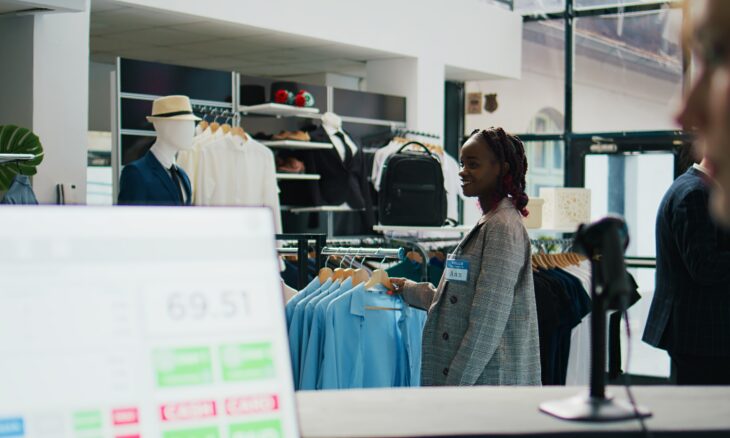The retail industry is undergoing a revolution, driven by artificial intelligence (AI). From personalizing customer interactions to streamlining supply chains, AI is helping retailers adapt to changing consumer expectations and improve operational efficiency. In this article, we’ll explore how AI is transforming the shopping experience and highlight real-world applications that showcase its potential.
1. Personalized Shopping Experiences
AI enables retailers to analyze vast amounts of customer data, including browsing behavior, purchase history, and preferences, to deliver tailored shopping experiences. Personalized recommendations keep customers engaged and improve sales.
Amazon
Amazon’s recommendation engine uses AI to suggest products based on customer interests. This system accounts for 35% of Amazon’s total sales, demonstrating the power of personalization in driving customer engagement.
Learn more about Amazon’s AI-driven recommendations: Amazon AI Recommendations.
2. Dynamic Pricing
AI enables retailers to implement dynamic pricing strategies by analyzing factors like demand, competitor pricing, and customer behavior in real time. This ensures competitive pricing while maximizing profits.
Walmart
Walmart uses AI to adjust prices dynamically based on market conditions. This approach helps maintain its position as a low-cost leader while optimizing margins.
Discover how Walmart leverages AI for pricing strategies: Walmart AI in Pricing.
3. Inventory Management and Demand Forecasting
AI optimizes inventory by predicting demand and identifying trends. This reduces overstocking and stockouts, improving operational efficiency.
Zara
Zara employs AI to forecast demand and manage inventory. By analyzing customer preferences and sales data, the brand ensures that the right products are available at the right time.
Learn more about Zara’s innovative use of AI in supply chain management: Zara AI Supply Chain.
4. AI-Powered Virtual Assistants
AI chatbots and virtual assistants enhance customer service by providing instant support, answering queries, and recommending products.
H&M
H&M’s virtual assistant, powered by AI, helps customers find the right size, style, and color for their clothing choices, making online shopping more convenient.
Explore H&M’s virtual assistant technology: H&M AI Customer Service.
5. Visual Search and Image Recognition
AI-powered visual search tools allow customers to find products using images. This technology enhances the shopping experience by making it easier to discover items they love.
ASOS
ASOS’s visual search feature enables customers to upload photos of clothing or accessories, and AI finds similar products in its catalog.
Discover how ASOS uses AI to enhance search functionality: ASOS AI Visual Search.

6. Checkout-Free Shopping
AI and machine learning have enabled the creation of checkout-free stores, where customers can shop without waiting in lines.
Amazon Go
Amazon Go stores use AI-powered sensors and cameras to track items as customers pick them up and leave the store. Payments are processed automatically, creating a seamless shopping experience.
Learn more about Amazon Go’s AI-powered checkout technology: Amazon Go AI.
7. Augmented Reality (AR) for Enhanced Shopping
AI-powered AR tools help customers visualize products in their homes or try on items virtually, bridging the gap between online and in-store shopping.
IKEA Place
IKEA Place allows customers to use AR to see how furniture would look in their space, improving confidence in online purchases.
Explore IKEA’s AR shopping app: IKEA Place AR.
8. Fraud Detection and Payment Security
AI enhances payment security by detecting fraudulent activities in real time. It analyzes patterns and flags suspicious transactions, ensuring customer trust.
PayPal
PayPal uses AI to monitor transactions for unusual behavior, preventing fraud and protecting user accounts.
Learn more about PayPal’s AI fraud detection: PayPal AI Security.
9. Customer Sentiment Analysis
AI tools analyze customer feedback from reviews and social media to understand sentiment and improve products or services.
Sephora
Sephora uses AI to analyze customer reviews and tailor its offerings to match customer preferences, ensuring a superior shopping experience.
Discover Sephora’s use of AI for customer insights: Sephora AI.
10. Robotics in Retail
AI-driven robots are improving retail operations by assisting with tasks like shelf scanning, inventory updates, and customer assistance.
Lowe’s
Lowe’s employs robots to help customers locate products in-store and provide inventory updates to staff, enhancing efficiency.
Learn more about Lowe’s AI-powered robotics: Lowe’s Robotics.
Conclusion: The Future of Retail with AI

AI is revolutionizing the retail industry by delivering personalized shopping experiences, optimizing operations, and enhancing customer satisfaction. As technology continues to evolve, retailers that adopt AI solutions will gain a competitive edge, delighting customers while driving growth.
Whether it’s predictive analytics, checkout-free shopping, or AR visualization, AI is unlocking new possibilities for the shopping experience. The future of retail is here, and it’s powered by AI.
Related articles
Case Studies of AI Success in Business









